A decrease in your level of physical activity and a loss of balance and flexibility can increase your chances of falling. Other factors that may influence your risk of falling are poor vision, lack of strength, and hazards around the home such as dim lighting and cluttered walkways.
Exercises that improve your balance, flexibility, and strength can reduce your risk for falls. This publication discusses exercises that can help you maintain or improve your balance, strength, and flexibility.
*Talk to your health care provider before starting any exercise program.
Before you start:
- Wear comfortable clothes that will allow you to move freely.
- Wear appropriate shoes, such as those with slip-resistant soles. If you are unsteady on your feet, have someone assist you or use a chair to help with balance. As you progress in your exercises, try to use less assistance.
- If you become dizzy, out of breath, disoriented, or have any type of pain, especially chest pain, stop your exercises immediately. Call for help if necessary.
- Maintain good posture while exercising. Keep your back straight when you are standing and concentrate on each body part you are using.
No single exercise can suit everyone. These are beginner-level exercises. If you want a more challenging routine, consider these changes:
- Do not hold onto a chair for stability; use one hand or one finger.
- Complete all repetitions on one leg before switching to the other leg.
- Increase the number of repetitions.
- Add hand or ankle weights.
Heel Raises
- Stand up straight, feet flat on the floor. Hold on to a chair for balance.
- Slowly rise up on tiptoes as high as possible.
- Hold this position for about two seconds.
- Slowly lower heels to starting position.
- Repeat 8 to 15 times.
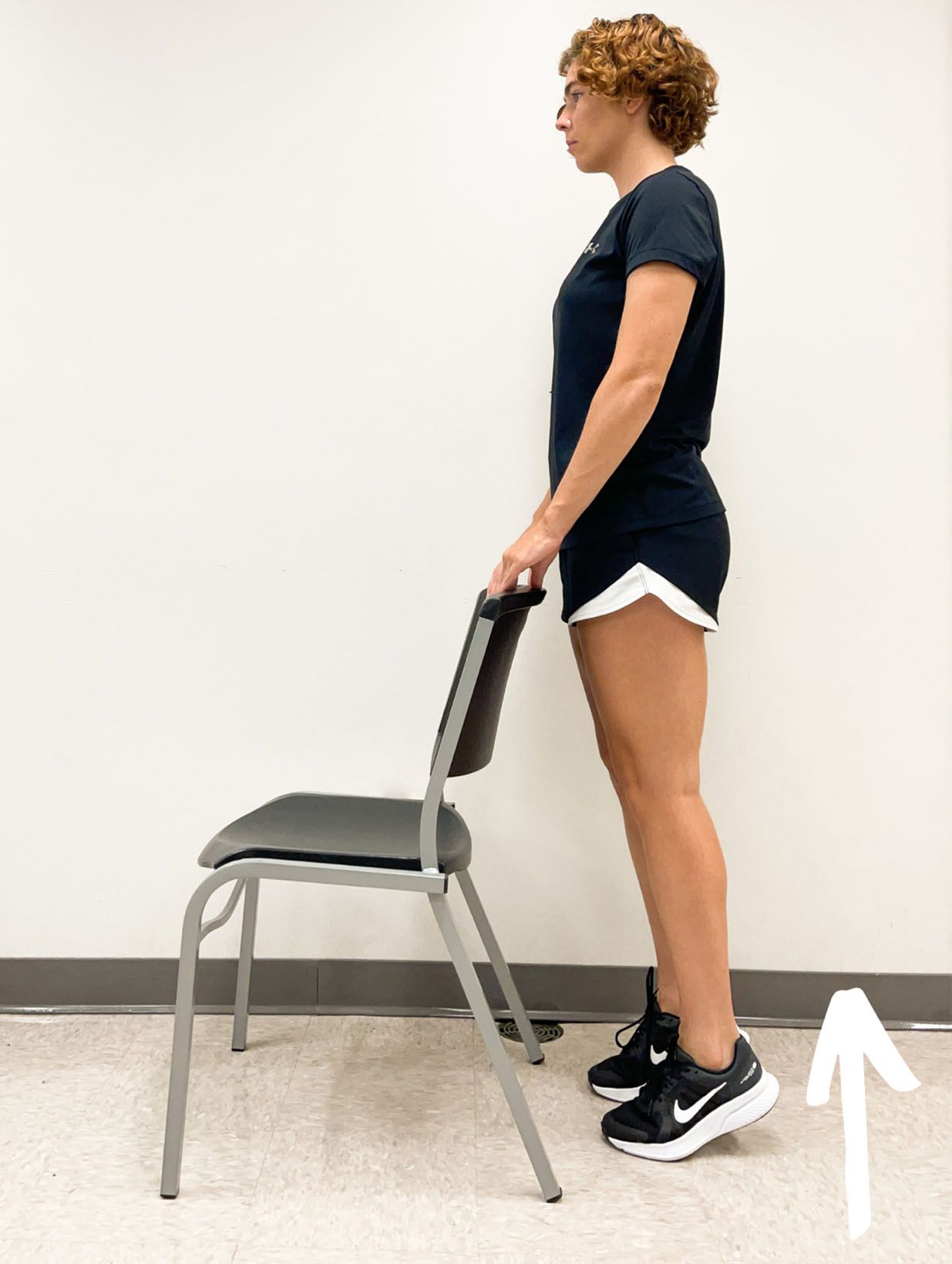
Credit: Karuna Doshi
Knee Flexion
- Stand up straight; hold on to a chair for balance.
- Slowly bend one knee as far as possible, while you balance on the other leg.
- Hold this position for about two seconds.
- Slowly lower foot back down to the floor.
- Alternate legs until you have repeated the exercise 8 to 15 times per leg.
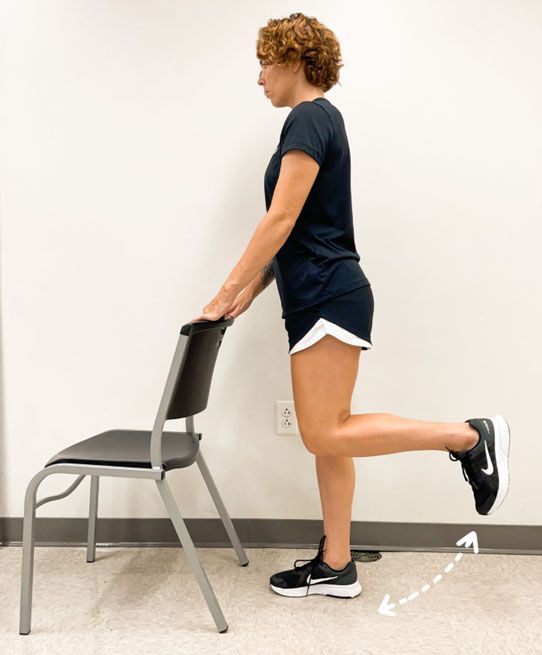
Credit: Karuna Doshi
Knee to Chest
- Stand up straight; hold on to a chair or countertop for balance.
- Slowly bring one knee toward your chest without bending at the waist or lower back.
- Hold this position for about two seconds.
- Slowly lower foot back down to the floor.
- Alternate legs, repeating the exercise 8 to 15 times per leg.
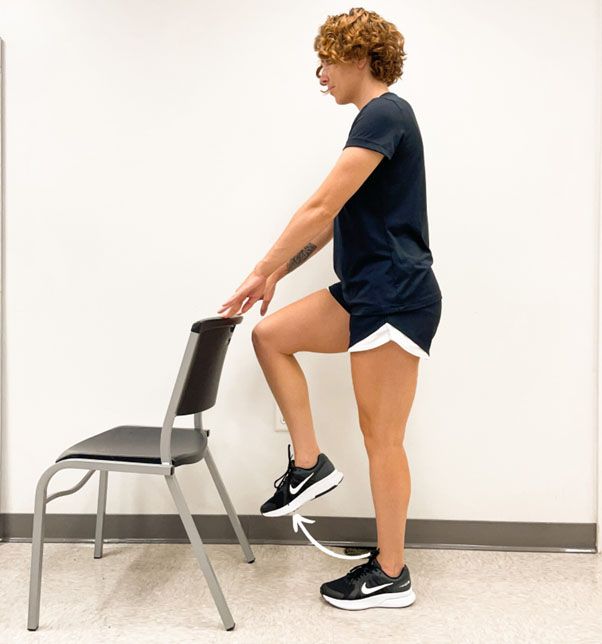
Credit: Karuna Doshi
Hip Extension
- Stand 12 to 18 inches from a chair.
- Slowly bring one leg straight backwards a few inches off the floor.
- Do not bend the waist. Initiate the movement with your gluteal muscles, and keep your abdominal muscles tight to prevent arching in your lower back.
- Hold this position for about two seconds.
- Slowly return leg to starting position. Alternate legs until you have repeated the exercise 8 to 15 times with each leg.
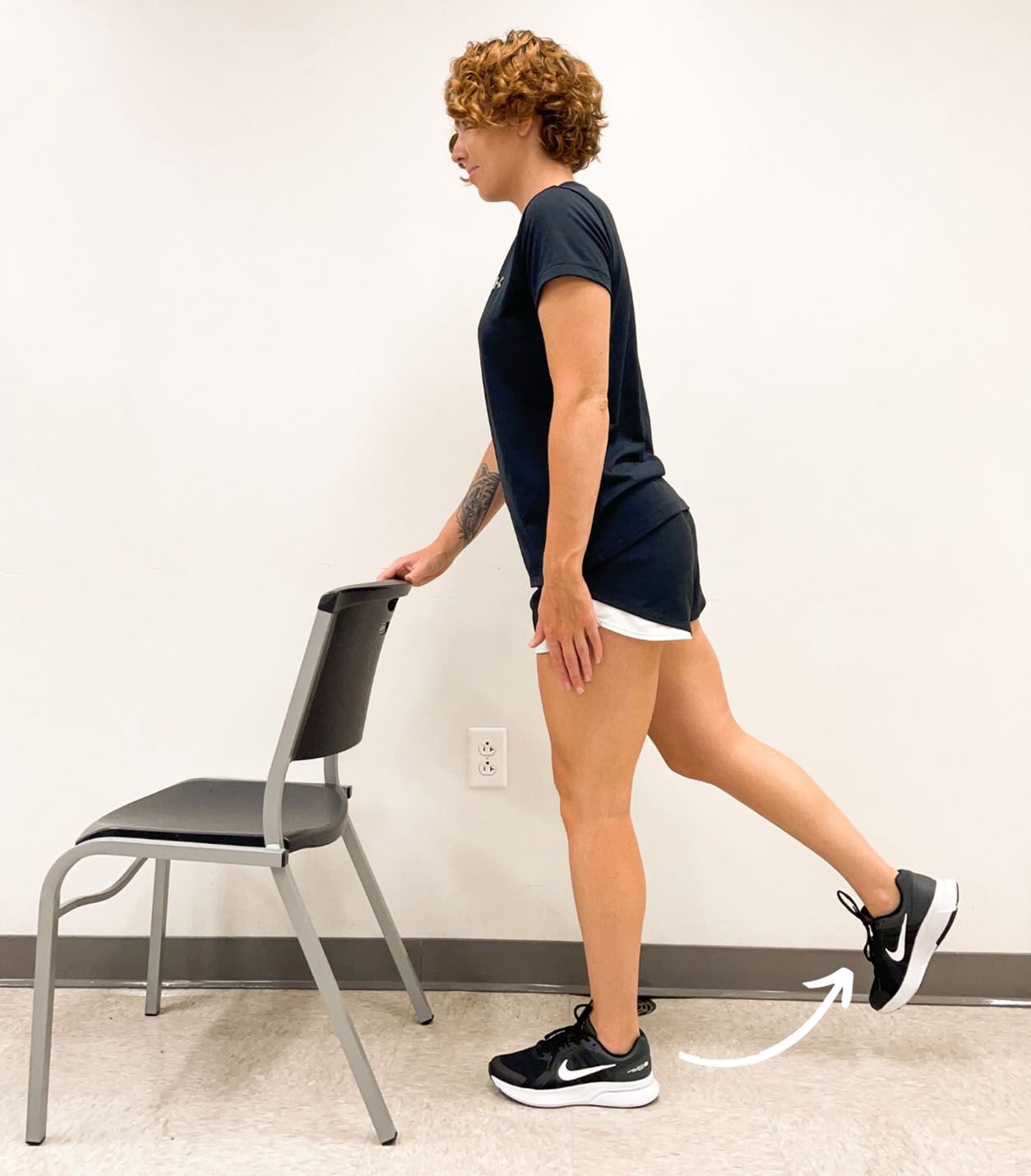
Credit: Karuna Doshi
Side Leg Raise
- Stand up straight; hold on to a chair for balance.
- Slowly lift one leg to the side, 8 to 12 inches.
- Hold position for about two seconds.
- Slowly lower leg.
- Keep back tall and knees straight (but not locked) throughout exercise.
- Repeat the exercise 8 to 15 times, then switch to the other leg.
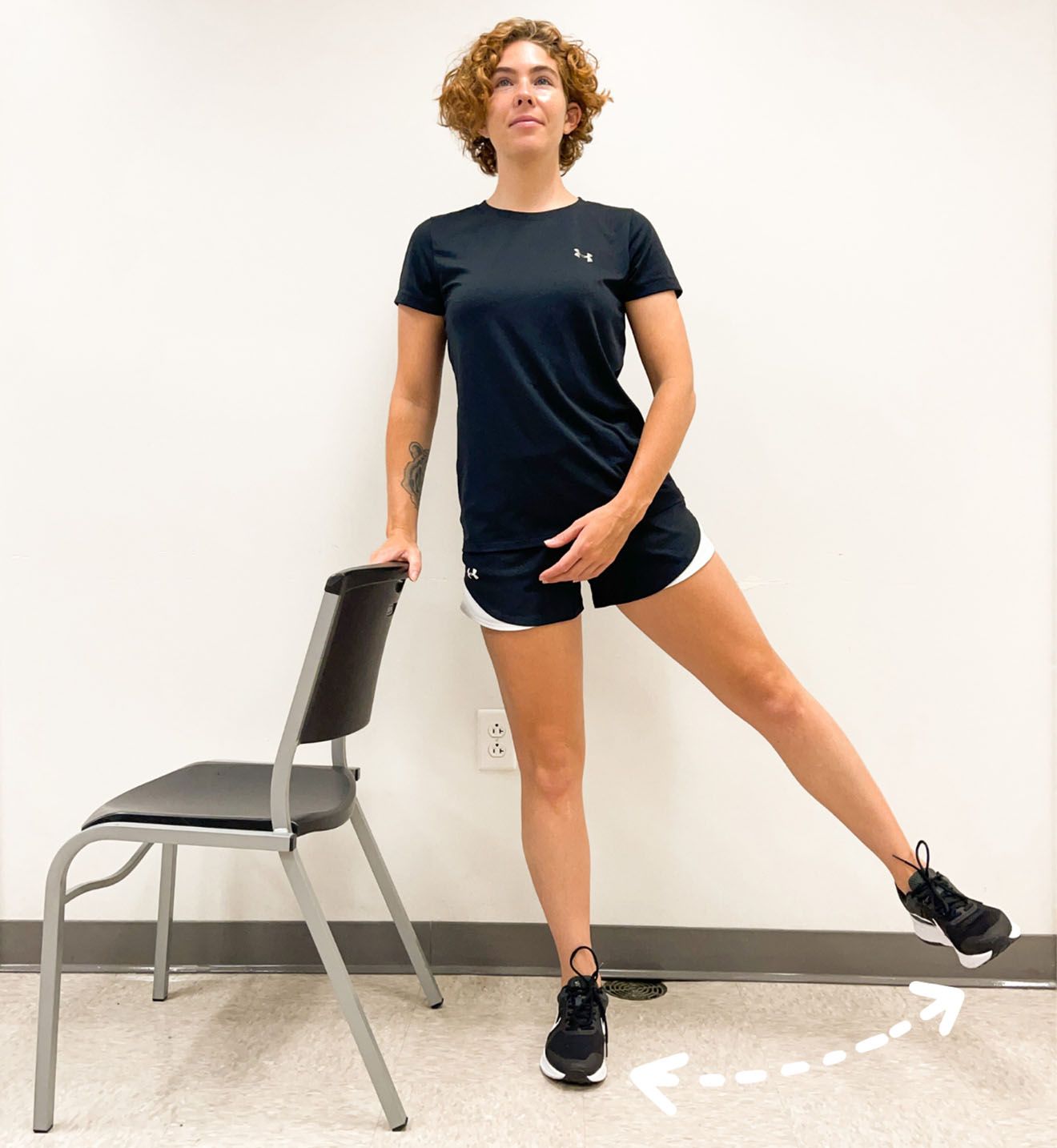
Credit: Karuna Doshi
Chair Squat
- Stand up straight with a chair directly behind you.
- Use a chair with armrests if you need more support.
- Sit down, using your legs to lower yourself down onto the chair.
- While keeping your chest up and eyes forward, stand up slowly with little or no assistance from your arms.
- Pause after standing and after sitting so you do not become dizzy.
- Repeat 8 to 15 times.
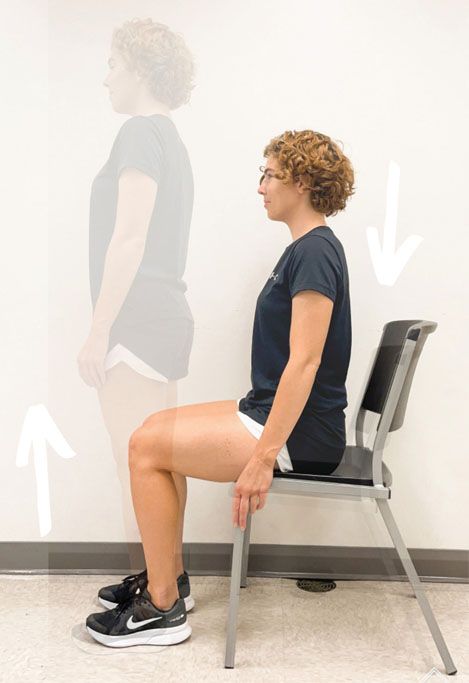
Credit: Karuna Doshi
Seated Hamstring Stretch*
- Sit down with one leg extended on a chair in front of you.
- Bend at the hip and lower your upper body towards your leg as far as you can without pain.
- Do not lock your knees. You can place a rolled towel under your thigh to prevent this.
- Repeat with opposite leg.
- Hold for 15 to 30 seconds.
*If you have had a hip replacement, consult your physician before performing this stretch.
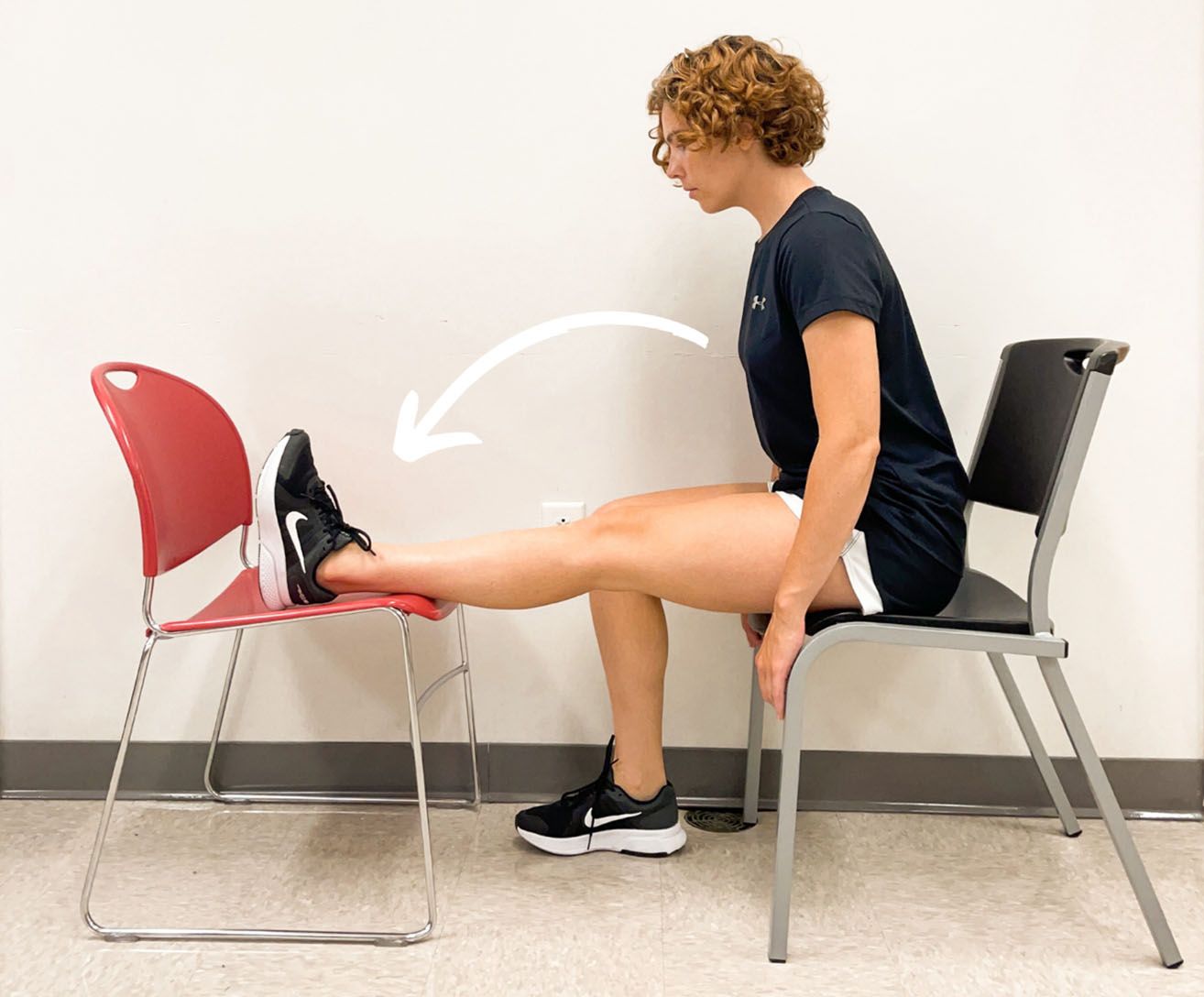
Credit: Karuna Doshi
Side-to-Side Stretch
- Stand up straight.
- Place hands on hips.
- Slowly slide one hand down your side towards your knee.
- Hold for 15 to 20 seconds.
- Repeat on opposite side.
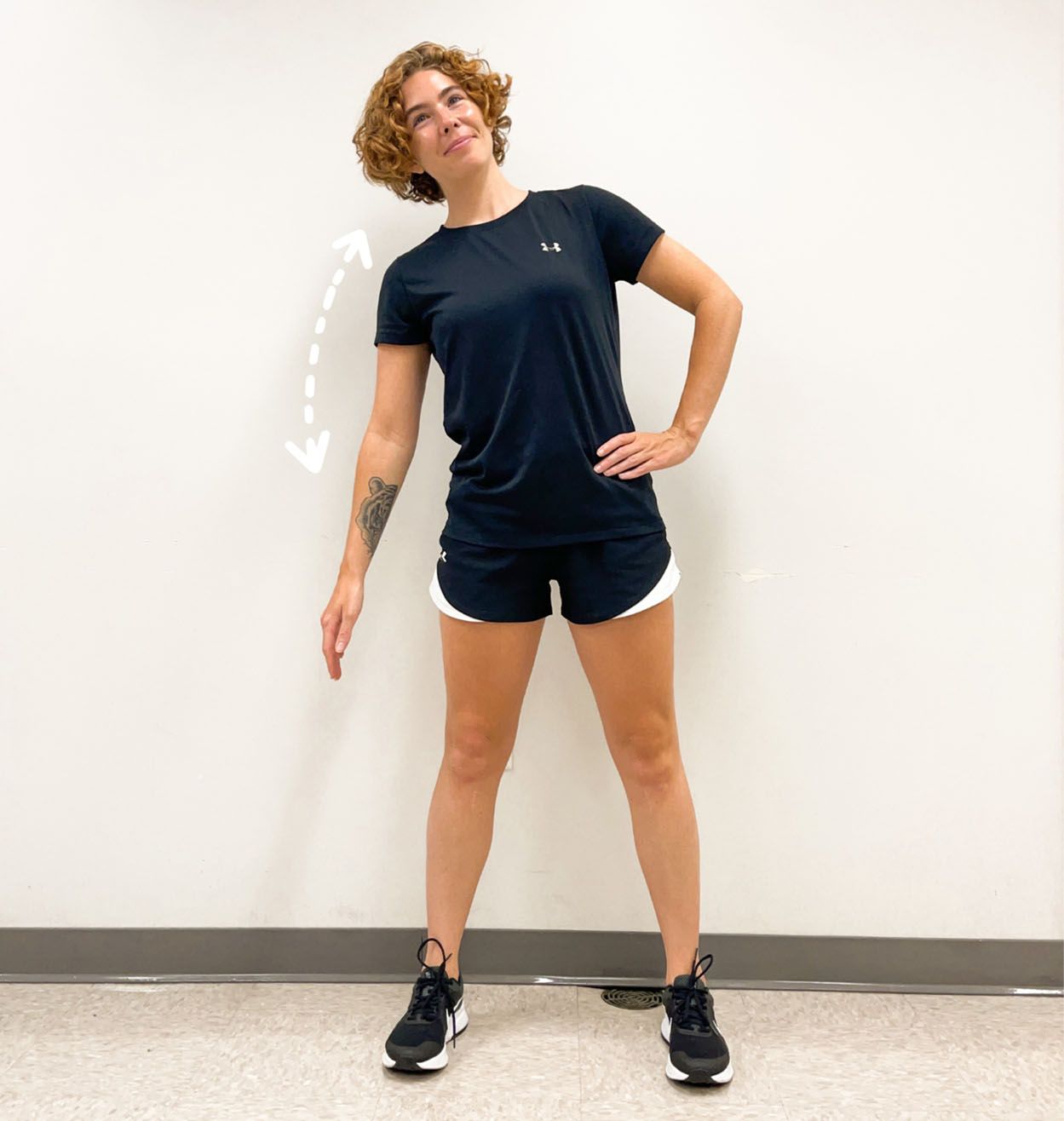
Credit: Karuna Doshi
Lower Leg Stretch
- Stand facing a wall with both hands against the wall at chest level.
- Step back with one leg.
- Bend the front leg slightly. Be sure your knee does not go past your toes.
- Keep both heels on the ground.
- Hold this position for 15 to 30 seconds.
- Repeat on opposite leg.
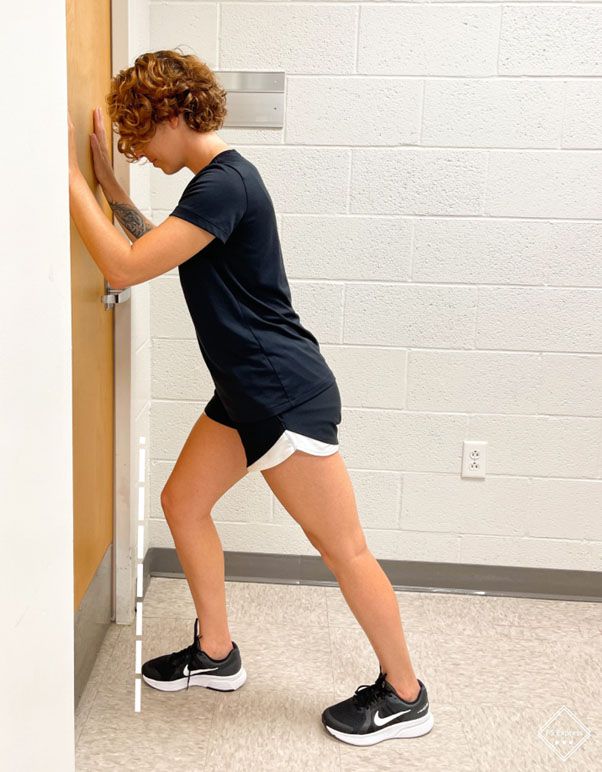
Credit: Karuna Doshi
Head Lean
- Stand or sit up straight.
- Slowly bring your right ear towards your right shoulder. Try not to raise your shoulder up towards your ear.
- Hold for a couple of seconds.
- Slowly bring your head back up to the starting position.
- Repeat this exercise 5 to 10 times alternating sides.
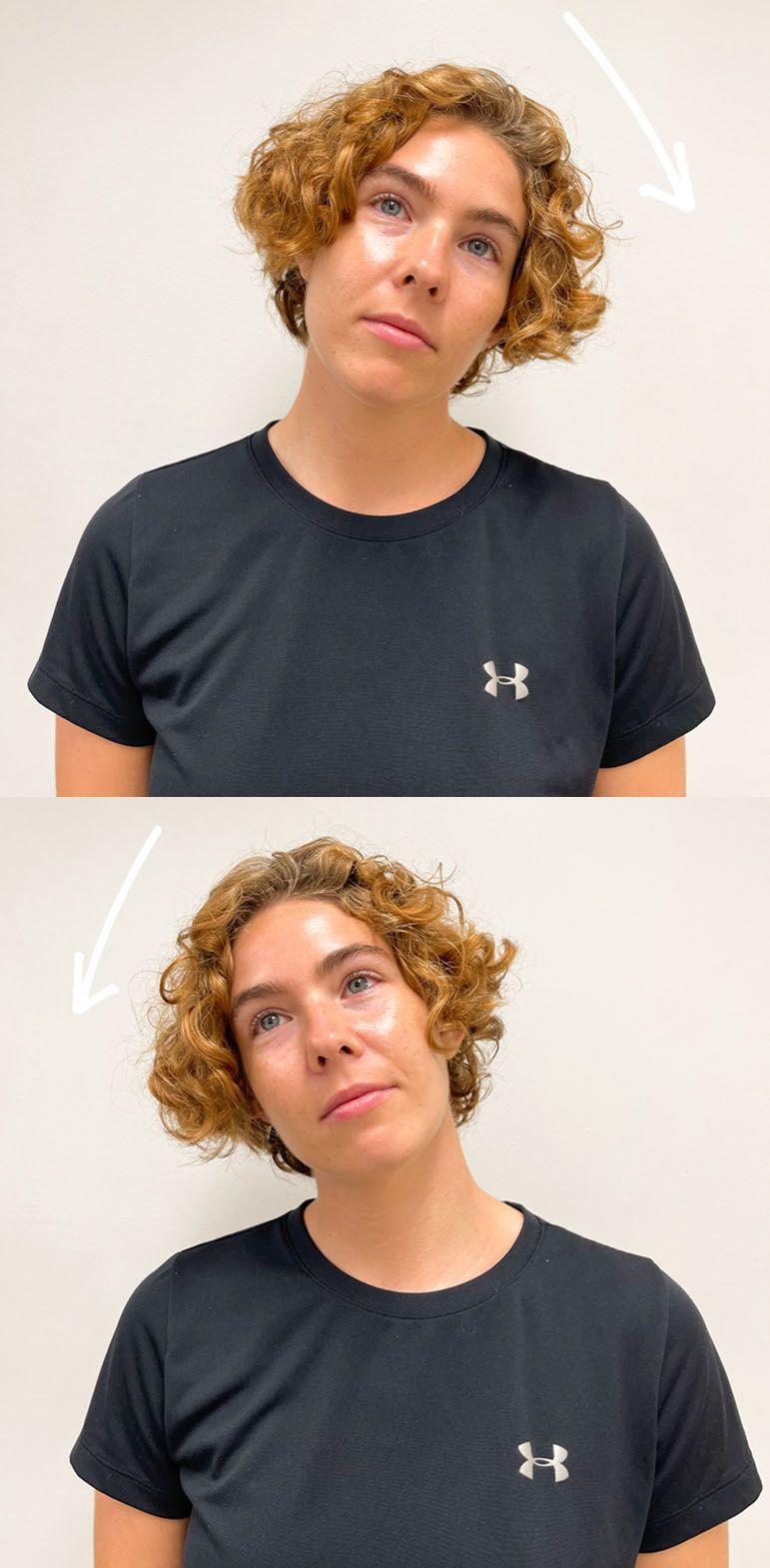
Credit: Karuna Doshi
Chin to Chest
- Stand or sit up straight.
- Slowly bring your chin towards your chest as far as you can.
- Hold for a couple of seconds.
- Slowly bring your head back up to the starting position.
- Repeat 5 to 10 times.
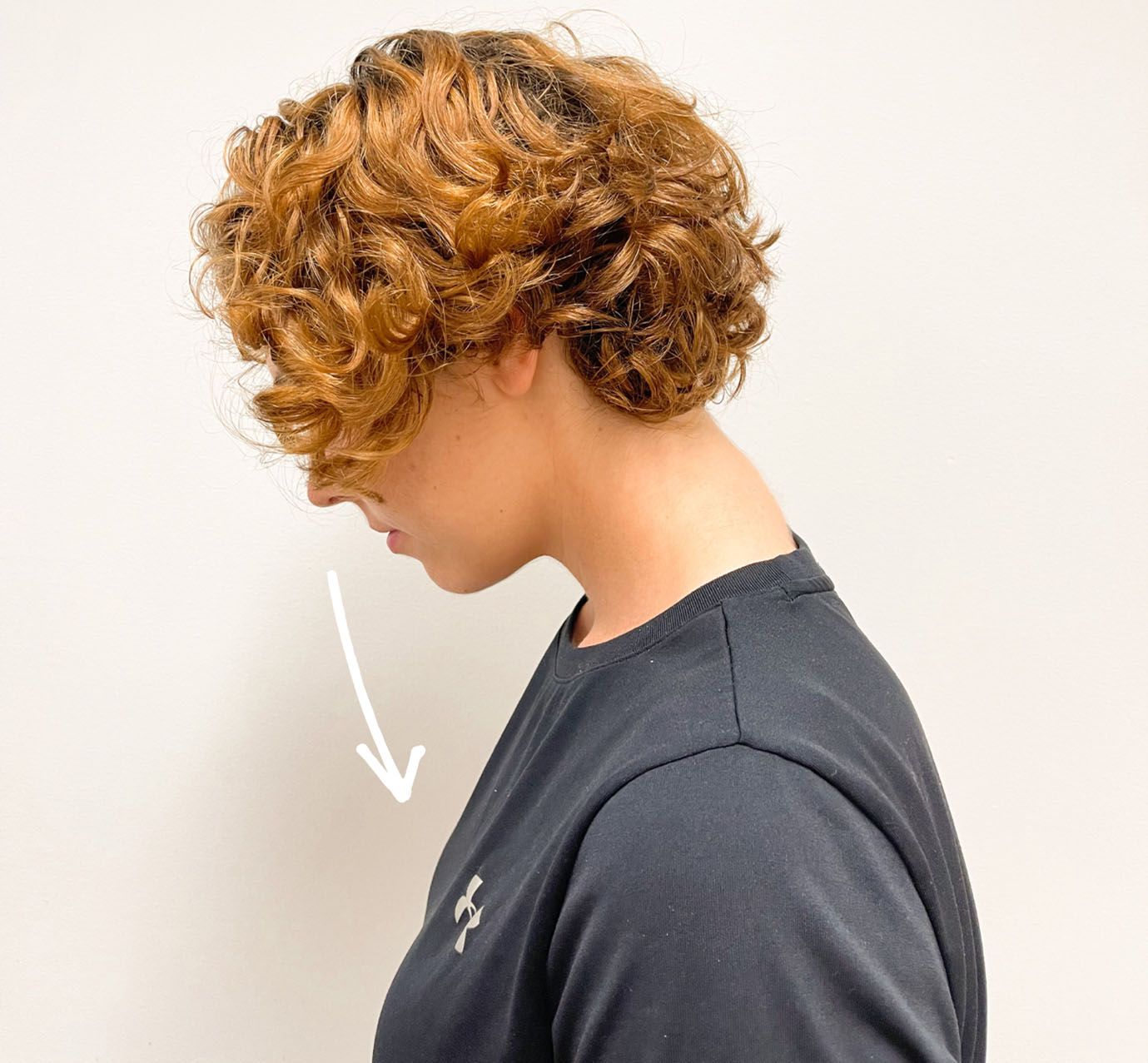
Credit: Karuna Doshi
Recommended Resource
Optimizing Footwear for Older People at Risk of Falls: https://pubmed.ncbi.nlm.nih.gov/19235118/